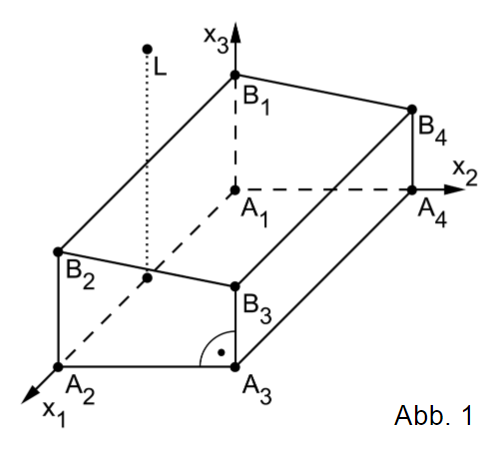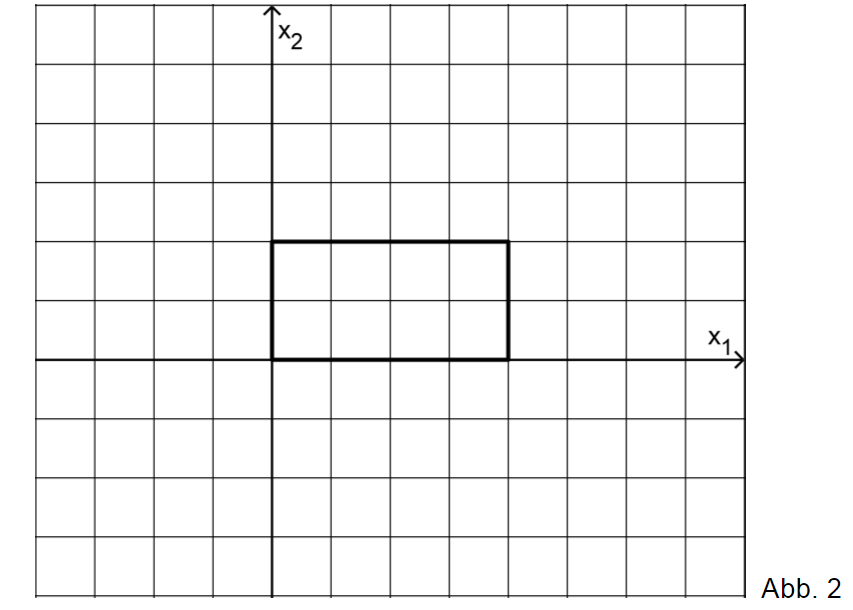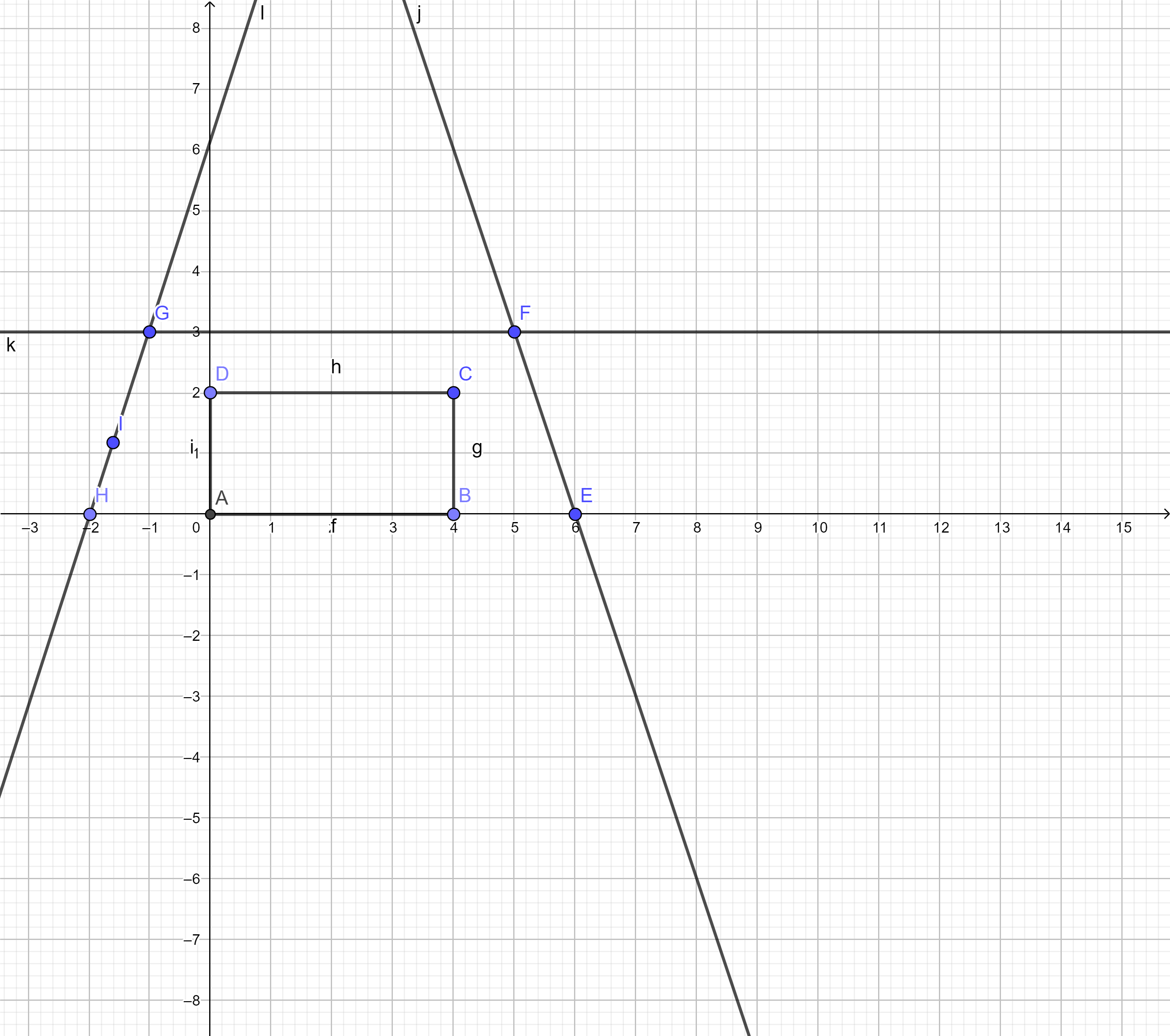Man kann natürlich auch berechnen:
Die Ebene E in Parameterform lautet
Um den Normalenvektor zu bestimmen, bilden wir das Vektorprodukt von und :
. Da es nur auf die Richtung ankommt, kürzen wir durch 4 und nehmen .
Weil die zweiten und dritten Komponenten von und gleich sind, gibt es hier noch einen anderen Weg:
Man schreibt als Normalenvektor ;
wobei der Wert der ersten Komponente vorerst beliebig bleibt.
Jedenfalls gilt immer: Das Skalarprodukt .
Nun bildet man das Skalarprodukt .
Damit gilt: .
Oder gekürzt: .
Auf diese Weise spart man sich die Berechnung des Vektorproduktes und vermeidet dadurch unnötige Rechenfehler.
Nun bildet man das Skalarprodukt aus dem berechneten Normalenvektor mit dem Ortsvektor der Ebene in Parameterform und erhält
Teilaufgabe b)
Berechnung des Winkels zwischen der Dachfläche und der Horizontalen ist der Winkel zwischen der Ebene E und der --Ebene.
Der Winkel zwischen zwei Ebenen entspricht dem Winkel zwischen den jeweiligen Normalenvektoren.
Der Normalenvektor der Ebene hat die Länge
Ein Normalenvektor der - -Ebene ist und hat die Länge .
Damit gilt für
wobei der Wert des Skalarproduktes von .
Oder
Teilaufgabe c)
Berechne einen Punkt auf der Kante , sodass die Verbindungsstrecken des Punktes zu und senkrecht aufeinander stehen.
Die -Koordinate des Punktes ist unbekannt und wird mit bezeichnet.
Damit hat die Koordinaten .
Die Vektoren und sind orthogonal, wenn das Skalarprodukt gleich null ist.
Lösung über quadratische Ergänzung:
Damit gibt es einen Punkt mit der geforderten Eigenschaft.
Der Punkt liegt außerhalb der Kante
Teilaufgabe d)
Die Spitze der Lampe hat die Koordinaten
Ermittele eine Gleichung der Ebene durch die Punkte und
.
Der Normalenvektor wird mit dem Vektorprodukt der Richtungsvektoren bestimmt:
. Wieder kommt es auf die Länge nicht an und wir wählen .
Und als Ebenengleichung in Punkt-Normalenform:
.
Teilaufgabe e)
Für die Gleichung der --Ebene kann man die Punkt-Richtungsform oder eine Normalenform verwenden.
man setzt in die Ebene ein:
Das setzen wir in ein:
Um die Gleichung der Kontrolle zu erhalten, setzt man und sieht, dass der Punkt in der Ebene liegt.
Teilaufgabe f)
Man betrachtet vier Lichtstrahlen von aus. Die --Ebene hat die Normalenform
Schattenpunkt
in Schattenpunkt
Durch die Punkte und wird die Schattenlinie beschrieben.
Aus Symmetriegründen ergeben sich für die Schattenpunkte aus den Lichtstrahlen und : und .



